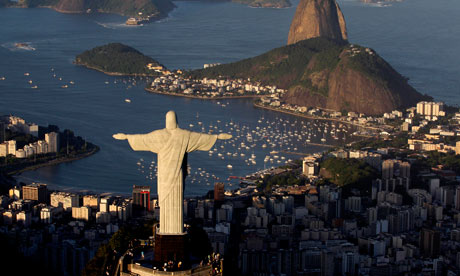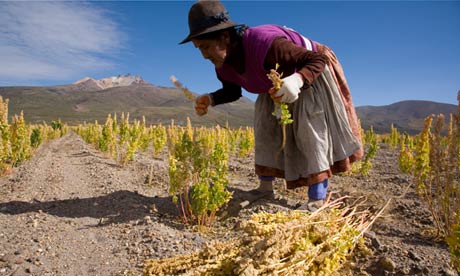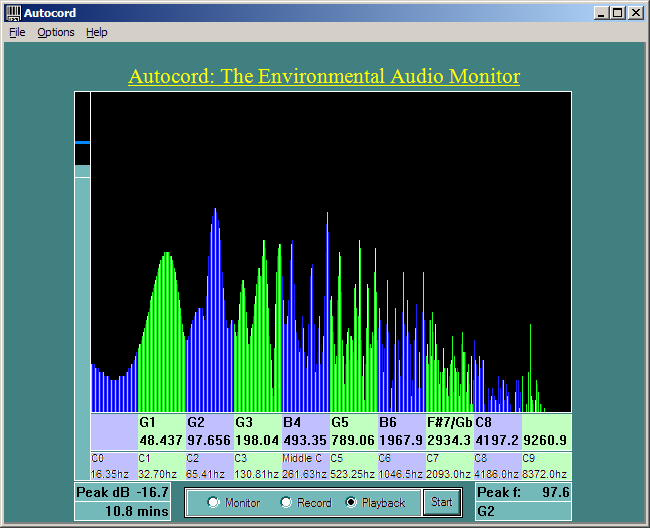The following news item , as reported by Reuters, speaks to the
trading efficiency that we had discussed recently. Unfortunately, it
also makes it clear that the EU plan for Cap and Trade is in shambles.
*******************************************************************************
The crisis facing the European carbon market will not deter China
from plans to establish its own emissions trading platform or its other
climate pledges, the senior official responsible for climate change
said on Thursday.
Xie Zhenhua, vice-director of
the National Development and Reform Commission in charge of climate
policies, said efforts to cut greenhouse gas emissions were a "domestic
requirement". They were, he said, designed to address longstanding
inefficiency and environmental problems, and did not depend on other
nations, or on the state of the economy.
"China
has pledged these targets to the international community to deal with
climate change and they will not change," he said at an event in
Beijing. "Even if other countries say they will do nothing, we will keep
to our strategy. No matter what happens to our economy, we cannot make any change."
The
global financial crisis has saddled Europe's Emissions Trading Scheme
(ETS) with a crushing oversupply of carbon credits and record low
prices, but the EU parliament this week rejected proposals to bail the
market out.
The ETS allows
enterprises to meet their carbon reduction targets by purchasing carbon
credits from the market, enabling them to keep emitting greenhouse
gases. Many credits have been generated by low-carbon projects in China as part of a United Nations scheme known as the Clean Development Mechanism.
China
is planning a similar domestic scheme in which carbon-intensive
enterprises and industries can meet their own targets by acquiring the
emission quotas allocated to other firms.
Xie
said China ultimately sought to link its carbon trading platforms with
those elsewhere, but was focused now on domestic needs.
"In
the future we will establish a link, but in the next few years we first
need to establish a carbon market according to Chinese conditions and
the conditions of developing countries," he said.
LEARNING FROM EUROPE
He
said China would learn from mistakes made in Europe, especially when it
comes to prices, with Shanghai set to include a mechanism by which
carbon credits can be taken off the market when supplies are too high
and prices too low.
Carbon prices
on Europe's ETS were trading at an all-time low of 2.46 euros ($3.21)
per tonne on Tuesday, down from 18 euros just two years ago. Xie said
the problem was that the mandatory emission cuts in Europe had been set
too low.
"Why have the prices gone
from such a high to such a low? Because of the rate of emissions cuts,"
he said. "If it was higher, and if there were more pressures, the
market would be much more active. It is probably related to the initial
design of the exchange and the way emissions targets were allocated."
China is the biggest emitter of greenhouse gases on an aggregate basis, but levels are low in per capita terms.
Xie
said China's pilot carbon market scheme was on track, with trading to
begin in the southeastern city of Shenzhen in June and later in the business hub of Shanghai before year-end.
But
he said China would find it increasingly difficult to meet its 2020
climate change pledges. Problems, he said, would "get harder and harder
and the costs will be higher and higher".
China
has pledged to reduce 2011 levels of carbon intensity -- the amount of
climate-warming carbon dioxide produced per unit of GDP growth -- by
40-45 percent by 2020.
It has also
vowed to increase the share of non-fossil fuel energy to 15 percent of
its total energy mix by the same period and close vast swathes of
inefficient industrial capacity.
This space is created for the benefit of the students registered in Eco 296U at Pace, Pleasantville NY.
Friday, April 19, 2013
Saturday, April 13, 2013
Sunday, March 31, 2013
Monday, March 18, 2013
Saturday, March 9, 2013
Sustainable Development.
It has been over six months since RIO + 20 and not much has changed. Actually it will not be an exageration to call the whole effort a drastic failure. But the UN is still pushing its effort to educate the world that sustainability is a must and that economic growth is not. The new mantra should become sustainable development. Please note that we do not speak of sustainable growth since nothing can ever grow indefinitely. Sustainable growth is an oximoron and as such the phrase must never be used.
Combine your assigned readings with the following article that speaks to this topic.
*******************************************************************************
It's time for sustainable development
Activists,
NGOs and academics want Rio+20 to put sustainable development and
poverty reduction at the heart of global politics. If it doesn't
deliver, they should forge ahead by another route

The statue of Christ looms over Rio de Janeiro. Photograph: Felipe Dana/AP
Bill Clinton was set to enter the White House, the European Union was born and China had its first taste of a double cheeseburger with fries when McDonalds opened its doors in Beijing. That was 1992. A lot can happen in 20 years.
In June 2012, two decades after the groundbreaking Earth summit, which put climate change and biological diversity on the global political agenda, attention will turn once again to Rio de Janeiro for the UN conference on sustainable development, or Rio+20.
But the biggest environmental summit in 20 years is already proving controversial. The conference is a vital chance to renew political commitment for sustainable development at a time when urgent action must be taken to divert humanity from disaster. However, some commentators already believe it will be just another conference – all talk and no binding action.
The event's focus on the "green economy" is deeply dividing opinion. Some see the label as an opportunity to hitch global financial systems firmly to sustainable development goals. Others see it as an open invitation for the proliferation of "greenwash" initiatives, which continue to put profit before people and planet.
Meanwhile, there are calls for Rio's seven-strong shopping list of "critical issues" to be replaced by focus on one sector. UN executive Brice Lalonde, for example, has pushed for agriculture to be at the centre of negotiations, arguing that from agriculture other development goals – gender, biodiversity, land use, water, energy – flow.
Despite the summit slogan of "a future we want", how close the conference will get to a shared consensus on what that future is and how it will be secured, is unclear. As recently witnessed in Durban and Busan, the many and competing interests at play constantly threaten progress.
What can't be ignored is the UN's faltering progress on achieving the millennium development goals by 2015. The potential failure of the MDGs makes whatever happens at Rio+20 even more critical as the world struggles to set a post-MDG agenda.
However, after the second Rio+20 intersessional meeting held in New York in mid-December, word has it that a consensus is building among a core group of countries to use Rio+20 to shift the post-MDG agenda from poverty to sustainable development, ie from problems affecting the poor in developing nations to those affecting us all, everywhere.
Sustainable development is far from a new notion, of course, but putting developed and developing world issues in the same arena could transform future action. And Rio is where the nitty-gritty of this new agenda – the goals, targets and indicators – may be decided. Whether setting new goals to replace the existing targets is a good idea will be a controversial debate. As, no doubt, will the idea of lumping developed and developing country needs together under a sustainable development banner.
Despite widespread cynicism about Rio's ability to deliver anything of substance, there is an energetic groundswell of activity among activists, practitioners, NGOs and academics who want Rio+20 to deliver a workable agreement that puts sustainable development and poverty reduction at the heart of global politics.
A new type of politics fit for these turbulent times, when catastrophe threatens with increasingly alarming regularity, should have science, technology and innovation at its core.
Science and technology can work more directly for social justice, poverty alleviation and the environment, helping to build a just and equitable green economy at a global level. But different forms of innovation that address sustainable development challenges at local, national and global levels need to be encouraged.
Not just the type of science and innovation that happens within governments, big business and scientific institutions, but within civil society – both in the form of organised public-interest groups and, more important, spontaneous citizen-led movements. This is where real change often happens.
Consensus at Rio on a global framework supporting innovation for sustainable development would be a major breakthrough.
But what if Rio+20 doesn't deliver? Some summits don't – remember COP15? Well, the sky won't fall in, not yet, anyway. But the question will be whether those with a stake in "the future we want" have the energy to forge ahead in addressing poverty reduction, social justice and environmental sustainability outside of the "system"? Let's hope they do.
Friday, February 15, 2013
Earth From Space
The Nova program ( http://www.pbs.org/wgbh/nova/space/earth-from-space.html) earth from space is a two hour video that explains many of the environmental connections. It is a bet too long and so this blog assignment will count double i.e. it is a two week assignment instead of only one.
Copy the link into your browser: http://www.pbs.org/wgbh/nova/space/earth-from-space.html
Copy the link into your browser: http://www.pbs.org/wgbh/nova/space/earth-from-space.html
Friday, February 8, 2013
Environmental "ramblings" :-)
Your assignment for this week is to listen to the Audio that has been added to your Course Document on BB and to add your comments here. Thanks.
Saturday, February 2, 2013
Overfishing = Extinction ?
The following is a brief excerpt about the possible effects of overfishing. The numbers should be very enlightening as to what is happening in this area:
***************************************************************************
To explain why overfishing is a problem we first have to get an idea on the scale of the problem. This is best done by looking at some figures published by the UN Food and Agriculture Organization. 1 The FAO scientists publish a two yearly report (SOFIA) on the state of the world's fisheries and aquaculture. 2 The report is generally rather conservative regarding the acknowledging of problems but does show the key issue and trends. Due to the difficulty of aggregating and combining the data it can be stated that the SOFIA report is a number of years behind of the real situation.
- 52% of fish stocks are fully exploited
- 20% are moderately exploited
- 17% are overexploited
- 7% are depleted
- 1% is recovering from depletion
- We are losing species as well as entire ecosystems. As a result the overall ecological unity of our oceans are under stress and at risk of collapse.
- We are in risk of losing a valuable food source many depend upon for social, economical or dietary reasons.
Fishing down the food web
It's not only the fish that is affected by fishing. As we are fishing down the food web 3 the increasing effort needed to catch something of commercial value marine mammals, sharks, sea birds, and non commercially viable fish species in the web of marine biodiversity are overexploited, killed as bycatch and discarded (up to 80% of the catch for certain fisheries), and threatened by the industrialized fisheries. 4 Scientists agree that at current exploitation rates many important fish stocks will be removed from the system within 25 years.Saturday, January 26, 2013
Cash Crops
I do realize that this course is only an introduction to what the UN means when they promote Green Economics as they do through the global meetings held to deal with the problem of Environment and economic Development yet I do believe that this short article from The Guardian touches on a very important but yet controversial issue related to globalization, cash crops and food security/insecurity. Please read and comment.

Can vegans stomach the unpalatable truth about quinoa?
Ethical consumers should be aware poor Bolivians can no longer afford their staple grain, due to western demand raising prices
• Peta response – Eating quinoa may harm Bolivian farmers, but eating meat harms us all
• Peta response – Eating quinoa may harm Bolivian farmers, but eating meat harms us all

A Bolivian woman
harvesting quinoa negro. 'Well-intentioned health and ethics-led
consumers here [are] unwittingly driving poverty there.' Photograph:
George Steinmetz/Corbis
Not long ago, quinoa was just an obscure Peruvian grain you
could only buy in wholefood shops. We struggled to pronounce it (it's
keen-wa, not qui-no-a), yet it was feted by food lovers as a novel
addition to the familiar ranks of couscous and rice. Dieticians clucked
over quinoa approvingly because it ticked the low-fat box and fitted in
with government healthy eating advice to "base your meals on starchy
foods".
Adventurous eaters liked its slightly bitter taste and the little white curls that formed around the grains. Vegans embraced quinoa as a credibly nutritious substitute for meat. Unusual among grains, quinoa has a high protein content (between 14%-18%), and it contains all those pesky, yet essential, amino acids needed for good health that can prove so elusive to vegetarians who prefer not to pop food supplements.
Sales took off. Quinoa was, in marketing speak, the "miracle grain of the Andes", a healthy, right-on, ethical addition to the meat avoider's larder (no dead animals, just a crop that doesn't feel pain). Consequently, the price shot up – it has tripled since 2006 – with more rarified black, red and "royal" types commanding particularly handsome premiums.
But there is an unpalatable truth to face for those of us with a bag of quinoa in the larder. The appetite of countries such as ours for this grain has pushed up prices to such an extent that poorer people in Peru and Bolivia, for whom it was once a nourishing staple food, can no longer afford to eat it. Imported junk food is cheaper. In Lima, quinoa now costs more than chicken. Outside the cities, and fuelled by overseas demand, the pressure is on to turn land that once produced a portfolio of diverse crops into quinoa monoculture.
In fact, the quinoa trade is yet another troubling example of a damaging north-south exchange, with well-intentioned health and ethics-led consumers here unwittingly driving poverty there. It's beginning to look like a cautionary tale of how a focus on exporting premium foods can damage the producer country's food security. Feeding our apparently insatiable 365-day-a-year hunger for this luxury vegetable, Peru has also cornered the world market in asparagus. Result? In the arid Ica region where Peruvian asparagus production is concentrated, this thirsty export vegetable has depleted the water resources on which local people depend. NGOs report that asparagus labourers toil in sub-standard conditions and cannot afford to feed their children while fat cat exporters and foreign supermarkets cream off the profits. That's the pedigree of all those bunches of pricy spears on supermarket shelves.
Soya, a foodstuff beloved of the vegan lobby as an alternative to dairy products, is another problematic import, one that drives environmental destruction [see footnote]. Embarrassingly, for those who portray it as a progressive alternative to planet-destroying meat, soya production is now one of the two main causes of deforestation in South America, along with cattle ranching, where vast expanses of forest and grassland have been felled to make way for huge plantations.
Three years ago, the pioneering Fife Diet, Europe's biggest local food-eating project, sowed an experimental crop of quinoa. It failed, and the experiment has not been repeated. But the attempt at least recognised the need to strengthen our own food security by lessening our reliance on imported foods, and looking first and foremost to what can be grown, or reared, on our doorstep.
In this respect, omnivores have it easy. Britain excels in producing meat and dairy foods for them to enjoy. However, a rummage through the shopping baskets of vegetarians and vegans swiftly clocks up the food miles, a consequence of their higher dependency on products imported from faraway places. From tofu and tamari to carob and chickpeas, the axis of the vegetarian shopping list is heavily skewed to global.
There are promising initiatives: one enterprising Norfolk company, for instance, has just started marketing UK-grown fava beans (the sort used to make falafel) as a protein-rich alternative to meat. But in the case of quinoa, there's a ghastly irony when the Andean peasant's staple grain becomes too expensive at home because it has acquired hero product status among affluent foreigners preoccupied with personal health, animal welfare and reducing their carbon "foodprint". Viewed through a lens of food security, our current enthusiasm for quinoa looks increasingly misplaced.
Adventurous eaters liked its slightly bitter taste and the little white curls that formed around the grains. Vegans embraced quinoa as a credibly nutritious substitute for meat. Unusual among grains, quinoa has a high protein content (between 14%-18%), and it contains all those pesky, yet essential, amino acids needed for good health that can prove so elusive to vegetarians who prefer not to pop food supplements.
Sales took off. Quinoa was, in marketing speak, the "miracle grain of the Andes", a healthy, right-on, ethical addition to the meat avoider's larder (no dead animals, just a crop that doesn't feel pain). Consequently, the price shot up – it has tripled since 2006 – with more rarified black, red and "royal" types commanding particularly handsome premiums.
But there is an unpalatable truth to face for those of us with a bag of quinoa in the larder. The appetite of countries such as ours for this grain has pushed up prices to such an extent that poorer people in Peru and Bolivia, for whom it was once a nourishing staple food, can no longer afford to eat it. Imported junk food is cheaper. In Lima, quinoa now costs more than chicken. Outside the cities, and fuelled by overseas demand, the pressure is on to turn land that once produced a portfolio of diverse crops into quinoa monoculture.
In fact, the quinoa trade is yet another troubling example of a damaging north-south exchange, with well-intentioned health and ethics-led consumers here unwittingly driving poverty there. It's beginning to look like a cautionary tale of how a focus on exporting premium foods can damage the producer country's food security. Feeding our apparently insatiable 365-day-a-year hunger for this luxury vegetable, Peru has also cornered the world market in asparagus. Result? In the arid Ica region where Peruvian asparagus production is concentrated, this thirsty export vegetable has depleted the water resources on which local people depend. NGOs report that asparagus labourers toil in sub-standard conditions and cannot afford to feed their children while fat cat exporters and foreign supermarkets cream off the profits. That's the pedigree of all those bunches of pricy spears on supermarket shelves.
Soya, a foodstuff beloved of the vegan lobby as an alternative to dairy products, is another problematic import, one that drives environmental destruction [see footnote]. Embarrassingly, for those who portray it as a progressive alternative to planet-destroying meat, soya production is now one of the two main causes of deforestation in South America, along with cattle ranching, where vast expanses of forest and grassland have been felled to make way for huge plantations.
Three years ago, the pioneering Fife Diet, Europe's biggest local food-eating project, sowed an experimental crop of quinoa. It failed, and the experiment has not been repeated. But the attempt at least recognised the need to strengthen our own food security by lessening our reliance on imported foods, and looking first and foremost to what can be grown, or reared, on our doorstep.
In this respect, omnivores have it easy. Britain excels in producing meat and dairy foods for them to enjoy. However, a rummage through the shopping baskets of vegetarians and vegans swiftly clocks up the food miles, a consequence of their higher dependency on products imported from faraway places. From tofu and tamari to carob and chickpeas, the axis of the vegetarian shopping list is heavily skewed to global.
There are promising initiatives: one enterprising Norfolk company, for instance, has just started marketing UK-grown fava beans (the sort used to make falafel) as a protein-rich alternative to meat. But in the case of quinoa, there's a ghastly irony when the Andean peasant's staple grain becomes too expensive at home because it has acquired hero product status among affluent foreigners preoccupied with personal health, animal welfare and reducing their carbon "foodprint". Viewed through a lens of food security, our current enthusiasm for quinoa looks increasingly misplaced.
Tuesday, January 22, 2013
UNEP Video Clip
Since the video clip is not embedded you have to copy the link into your browser. Watch the short clip and then add your remarks/comments using your real name. No Anons are accepted.
http://www.unep.org/flvPlayer/videoplayer.asp?id=27570&l=en
http://www.unep.org/flvPlayer/videoplayer.asp?id=27570&l=en
Subscribe to:
Posts (Atom)




